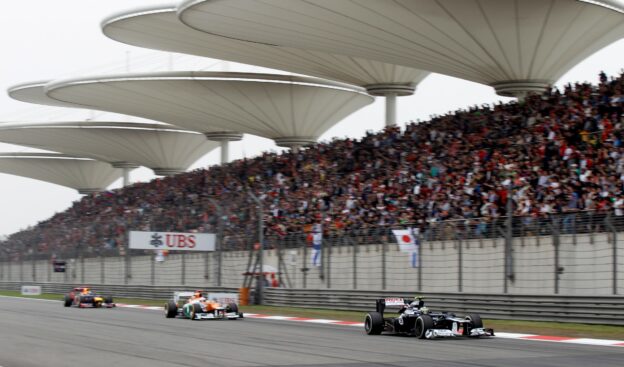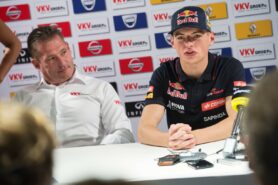China- Tilke’s masterpiece

Only a few of the modern Formula 1 circuits are popular amongst fans and drivers, but the Shanghai International Circuit bucks that trend.
With its twisting turns, long straights and famous first corner, China has become one of the most popular hosts outside of Europe.
The track was designed by German F1 specialist Hermann Tilke, and cost $450m to build. The design is allegedly inspired by Chinese character Shang, meaning ‘above or ascend’.
Like many Tilke tracks, a long back straight finishes with a tight hairpin, which provides plenty of overtaking opportunities.
The pit straight is rather short, and the first corner is one of the most notorious and technically challenging on the track.
The venue has also hosted MotoGP, Australian V8 and A1 racing but is synonymous with F1, and was built specifically with that in mind.
However, attendances have been falling in recent years despite a series of huge grandstands, that takes the capacity to over 270,000.
The grand prix was introduced to the calendar in 2004, along with Bahrain, and has staged many modern classics.
It was traditionally placed at towards the end of the season, and has often been affected by unpredictable weather.
In 2006, Michael Schumacher claimed his last ever victory in F1, with a stunning comeback drive to beat title rival Fernando Alonso. The German drove around the outside of Alonso at the 360° first corner, and took the lead in the title race.
But just as Schumacher’s title urge gathered momentum, Lewis Hamilton lost his in 2007. The Englishman, in his debut season, looked set to claim the championship that day, but his tyres gave up half-way through and he memorably slid into the gravel trap on his way into the pits.
Hamilton has done well since though, and claimed wins in 2008, 2011 and 2014.
Shanghai Track: three sections in detail
Turns 1 - 4
The slowest complex on the track is the radial turn from T1 through to T4 where the track tightens on itself and the driver progressively loses speed. Engine braking support and drive ability needs to be consistent here to give a stable rear end and avoid excessive wheel-spin, which costs both lap time and increases tyre wear. To reduce locking and improve the wear rate, engineers will map the engine to reduce engine braking when the driver lifts his foot off the pedal. This squares up the rear of the car, stops it from locking and reduces the tyre wear as a result. This phenomenon of reducing engine braking when the driver is off the throttle is called 'overrun'.
Turns 12 and 13
Turns 12 and 13, which form the radial corner that leads onto the long straight, are the mirror image of the first complex. Again, creating car stability will decrease lap time, particularly when the tyres are worn or wearing down. Another means of creating stability is to change the pedal maps, ie. the percentage of torque delivered in relation to the percentage of pedal application. While the throttle application needs to correspond roughly to the torque delivered, small variations can make a real difference in the stability of the car. In this complex a soft pedal map – where the engine delivers relatively less torque at a low pedal position – is likely to be used so the driver initially has more modulation to avoid wheelspin, which wears the tyres unnecessarily.
Back Straight
The straight between turns 13 and 14 is a touch over 1,300km and the engines will sit at full throttle for between 17 and 18 seconds – longer than it takes for a small airplane to take off! Given this period of time, which equates to about 20% of the lap time, it is essential to calibrate the engine and gear ratios to maximise acceleration without compromising maximum speed. Short ratios favour acceleration, which means getting up to speed in a shorter distance over the first part of the straight, while a longer top gear ratio permits higher maximum speed, which is important on the second part of the straight.
✅ Check out more posts with related topics:













LAST 3 F1 Fan COMMENTS